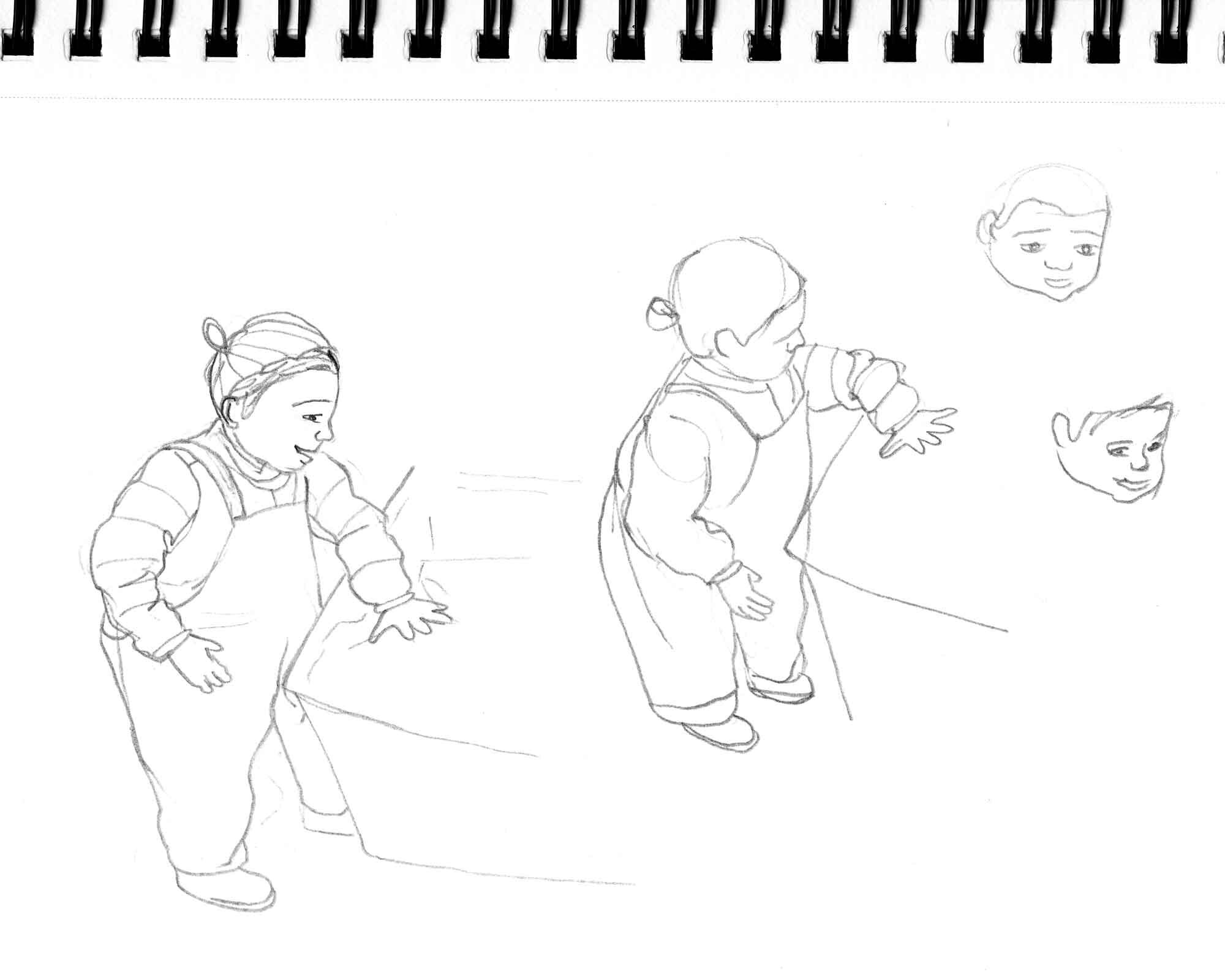I have been looking forward to having the opportunity to share more of the creative process behind my artwork. Earlier this month I jumped into a quick project with writer and artist Jennifer Thornhill Verma and it was the perfect example to show my workflow in action. I’ve broken it down here into the basic steps I take when tackling any new project.
When Jenn asked if I would be interested in creating an illustration to accompany her piece on the recreational cod fishery, or what locals prefer to call the food fishery, in Newfoundland and Labrador’s The Independent I was excited but hesitant. The deadline was four days and I don’t usually take on short notice projects. Luckily Jenn and I have developed a smooth workflow together so after a bit of thought, I wasn’t worried about jumping in.
1. Research and Gather References
My first step is always research. Often when I sit down, ready to draw I get that blank page panic feeling. That’s when I realize I’ve jumped ahead a step. I have to go back and do my research. After reading Jenn’s story (you can read it here) I explored a few photo references and thankfully, Jenn was able to provide some photographs of the fishing trip with her daughter in Newfoundland that inspired the piece that were perfect to draw from. I most often use my own photo references, and in a pinch, google images is a good resource.
2. Sketchbook Brainstorm
I started by brainstorming in my sketchbook to see if any compositions or images resonated with me. This is a bit like the collecting phase. You don’t know what might be useful in the end project, so every doodle is valuable. I don’t worry about scale and proportion too much at this phase as I can fix that later, for now I’m focusing on shapes and composition ideas.
3. Find the Focus
There were lots of opportunities to have fun with scale and push the codfish to the forefront, but I wanted to focus on what resonated with me the most in Jenn’s article: the generational connection to the cod fishery and how families maintain that connection in the years of the Cod Moratorium, which has taken many away from their home province. That meant a composition showing a connection between Jenn and her daughter, with the codfish as a supporting role.
My initial sketch book page for that idea looked like this:
4. Refine the Sketch
Next, I tackled some of the smaller drawing details that I would like to fix up. I wasn’t entirely happy with the perspective on Jenn’s daughter so I looked for more references (thanks google image) and re-sketched some options.
Finally, I brought those pieces together in photoshop into this final composition. The boots, hanging gloves and handline from the brainstorm sketch found their way into the final composition.
5. Paint
From there I traced the final drawing onto my hot press paper and got to painting. I’m currently using acrylic gouache paint for all of my projects. I really love the matt finish and bold colours I can achieve. I challenge myself to keep some of the linear elements from my original drawing in the painted piece. I like to try to tackle each object differently to add depth and variety, playing with flat colour alongside dry brush textures.
Once painted, I usually sit with a piece for a few days and make adjustments.
Every project is a little different but I find it comforting to have a workflow that I can rely on. For me this process provides an easy, low stress point to start from and lots of room to navigate around hurdles. If I were to pick up a paintbrush before going through steps one through three I would be lost.
I would love to hear what your workflow is like. Do you use a process similar to this?







